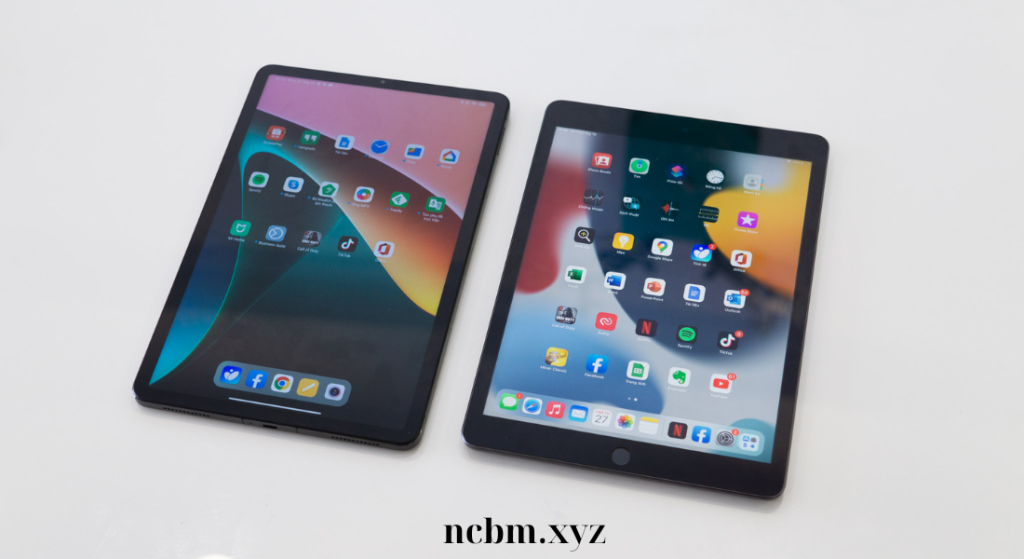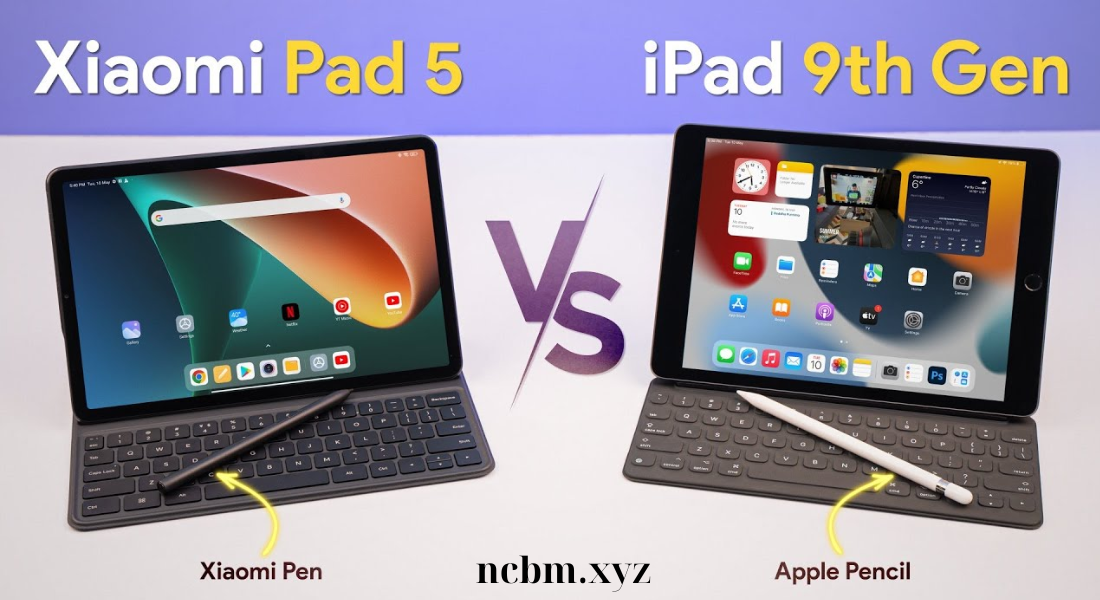Tablets have become essential tools for work, education, and entertainment, and two popular options on the market are the Mi Pad and the iPad. Xiaomi’s Mi Pad series offers an affordable, feature-rich alternative to Apple’s iPad, which has long been a leader in tablet technology. In this article, we’ll take an in-depth look at the Mi Pad vs iPad debate, comparing their design, performance, display quality, operating systems, battery life, and more. By the end, you’ll have a clear understanding of which tablet best fits your needs and budget.
Overview: Mi Pad vs iPad
The Mi Pad and iPad serve similar purposes but cater to different audiences. The Mi Pad is known for its affordability and impressive specs for the price, making it a great option for budget-conscious users who still want good performance. On the other hand, the iPad is a premium device with a more extensive app ecosystem, excellent hardware quality, and seamless integration with other Apple products. Let’s dive into the specifics of the Mi Pad vs iPad comparison to see how they stack up.
Design and Build Quality: Mi Pad vs iPad

When comparing Mi Pad vs iPad in terms of design, both tablets have a high-quality build, but each reflects its brand’s unique design philosophy.
Mi Pad Design
The Mi Pad series, including models like the Mi Pad 4 and Mi Pad 5, is known for its sleek design and solid construction. The Mi Pad often features a slim metal body with slim bezels, offering a premium feel at a more affordable price. Xiaomi has incorporated a modern look with rounded edges, making the Mi Pad comfortable to hold.
iPad Design
The iPad, especially the latest iPad Air and iPad Pro models, is known for its iconic aluminum unibody design and refined aesthetics. With rounded edges, thinner bezels, and a minimalistic approach, the iPad embodies Apple’s signature style. The iPad Pro and iPad Air even feature edge-to-edge displays and come in several colors, allowing users to choose a style that fits their preference.
Verdict: In terms of design in the Mi Pad vs iPad debate, the iPad stands out slightly for its refined premium build quality. However, the Mi Pad offers an impressive design at a lower price point, making it a solid choice for users who want quality without the premium price.
Display Quality: Mi Pad vs iPad
The display is one of the most crucial features in a tablet, especially for activities like streaming, reading, and gaming. Let’s see how the Mi Pad vs iPad comparison holds up in display quality.
Mi Pad Display
The Mi Pad 5, Xiaomi’s latest model, features an 11-inch 2.5K display with a 120Hz refresh rate, offering sharp visuals and smooth scrolling. This high-resolution display provides vibrant colors and is ideal for watching videos and playing games. The 120Hz refresh rate is a standout feature, as it enhances the fluidity of interactions on the screen.
iPad Display
The iPad series offers different display qualities depending on the model. The standard iPad has a 10.2-inch Retina display, while the iPad Air offers a 10.9-inch Liquid Retina display with True Tone technology, adjusting color temperature based on the lighting. The iPad Pro, with its 11-inch or 12.9-inch display and ProMotion technology, supports a 120Hz refresh rate and is ideal for creative professionals who need color accuracy and smoothness.
Verdict: In the Mi Pad vs iPad display comparison, the iPad Pro and iPad Air offer better overall quality with their True Tone and ProMotion technologies. However, the Mi Pad’s 2.5K resolution and 120Hz refresh rate make it an excellent choice for users focused on value without compromising much on visual quality.
Operating System and Ecosystem: Mi Pad vs iPad
The Mi Pad vs iPad debate often comes down to the choice of operating system. The Mi Pad runs on Android with Xiaomi’s MIUI skin, while the iPad uses Apple’s iPadOS, each offering unique benefits.
Mi Pad Operating System
The Mi Pad runs on MIUI, Xiaomi’s customized version of Android, which offers customization options, themes, and various Android app compatibility. However, it lacks the level of optimization seen in iPadOS, which may result in occasional lags or app compatibility issues. MIUI provides a user-friendly interface, but the app ecosystem may feel limited compared to Apple’s App Store, especially in tablet-optimized apps.
iPad Operating System
The iPad runs on iPadOS, which is specifically designed for tablets. It offers a more optimized app experience and has extensive support for multitasking, Apple Pencil, and Apple’s ecosystem. iPadOS provides access to a robust app ecosystem tailored for creativity, productivity, and entertainment. Additionally, iPad users benefit from seamless integration with other Apple products, like iPhones, Macs, and Apple Watches.
Verdict: In the Mi Pad vs iPad operating system comparison, iPadOS offers a more refined and tablet-optimized experience, especially for users already invested in the Apple ecosystem. However, the Mi Pad’s Android-based MIUI can be attractive for users who prefer a more open platform.
Performance and Processor: Mi Pad vs iPad
The Mi Pad vs iPad performance comparison is significant, as each tablet series uses different processors tailored to varying levels of performance.
Mi Pad Performance
The Mi Pad 5 is powered by the Qualcomm Snapdragon 860 or 870, depending on the model, which provides strong performance for gaming, multitasking, and media consumption. These processors are efficient and allow the Mi Pad to handle demanding apps and games with minimal lag. However, the Mi Pad’s performance may not match the iPad’s in high-end applications or intensive multitasking.
iPad Performance
The iPad Air and iPad Pro models use Apple’s A14 and M1 chips, respectively, with the iPad Pro’s M1 chip offering desktop-level power. The M1-powered iPad Pro handles high-performance tasks, such as video editing and 3D rendering, with ease. The standard iPad uses the A13 chip, which is also quite capable for everyday tasks.
Verdict: In terms of Mi Pad vs iPad performance, the iPad Pro and iPad Air provide better performance, especially for power users and creative professionals. The Mi Pad offers good performance for everyday tasks and moderate gaming, making it ideal for users who don’t require heavy multitasking.
Battery Life: Mi Pad vs iPad
Battery life is another important factor in the Mi Pad vs iPad debate, especially for users who rely on their tablet throughout the day.
Mi Pad Battery Life
The Mi Pad 5 includes an 8720mAh battery, which can last up to 10 hours of regular usage, including streaming, browsing, and light gaming. Xiaomi’s tablets also support fast charging, which allows users to quickly recharge and get back to using their device.
iPad Battery Life
The iPad series offers reliable battery life, with the standard iPad, iPad Air, and iPad Pro providing up to 10 hours of usage on a single charge. Apple’s battery optimization is excellent, and the iPad’s efficient hardware and software integration help it maintain strong battery performance over time.
Verdict: In the Mi Pad vs iPad battery life comparison, both tablets perform similarly. The iPad has slight efficiency advantages, but the Mi Pad offers comparable battery life with fast charging capabilities, making both good choices for long-lasting use.
Price Comparison: Mi Pad vs iPad
Pricing is often a deciding factor in the Mi Pad vs iPad comparison. The Mi Pad is generally more affordable, while the iPad offers a premium experience at a higher price.
- Mi Pad: Xiaomi’s Mi Pad series provides good value, offering high-quality features at an affordable price. This makes it an attractive option for budget-conscious users.
- iPad: The iPad is priced higher, especially with models like the iPad Air and iPad Pro. However, users are paying for a premium experience, including better app optimization, hardware quality, and access to the Apple ecosystem.
Verdict: The Mi Pad is a better choice for those seeking a feature-rich tablet at a lower price, while the iPad is ideal for users willing to invest in a premium experience.
Final Verdict: Which Tablet Should You Choose?
The Mi Pad vs iPad comparison highlights that each tablet has its strengths. Here’s a quick summary to help you decide:
- Choose the Mi Pad if you’re looking for an affordable tablet that provides solid performance, good display quality, and Android flexibility. It’s ideal for users who want an affordable device for media consumption, light gaming, and general use.
- Choose the iPad if you prefer a premium device with a more refined operating system, optimized app ecosystem, and seamless integration with other Apple devices. The iPad is ideal for creative professionals, students, and users already invested in Apple’s ecosystem who want the best tablet experience.
In conclusion, the Mi Pad vs iPad debate ultimately depends on your priorities and budget. The Mi Pad provides a fantastic balance of features and affordability, while the iPad delivers a superior, polished experience for those who can invest more. Both tablets are excellent choices within their categories, ensuring you’ll have a quality device no matter which you choose.
